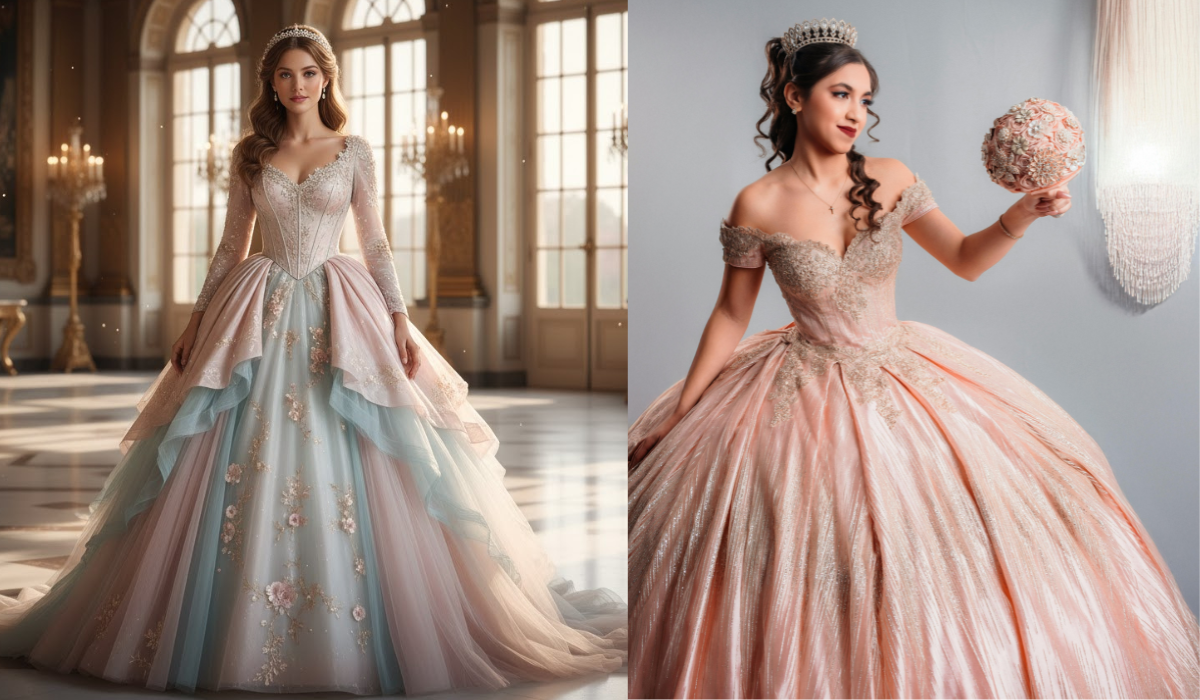Throughout human history, clothing has served not only as a practical necessity but also as an expression of identity, status, and imagination. Among the most enchanting garments ever conceived is the princess dress—a term that instantly evokes images of elegance, fantasy, and royal grace. Whether worn by an actual princess, a child playing dress-up, or a character in a storybook, the princess dress continues to hold a magical allure that transcends time and culture.
But what exactly defines a princess dress? How has it evolved, and why does it remain such a powerful symbol of beauty and imagination? Let’s explore the fascinating journey of the princess dress—its history, styles, cultural meanings, and continuing relevance in modern times.
The Origins of the Princess Dress
The concept of the princess dress finds its earliest inspirations in the formal court attire of European royalty. During the Renaissance and Baroque periods, royal women wore elaborate gowns crafted from silk, satin, and velvet, often adorned with lace, jewels, and gold embroidery. These garments were symbols of wealth and social rank, designed to reflect both the power and refinement of the royal family.
In the Victorian era, the evolution of tailoring and textile production made such dresses more accessible to the upper classes. Wide skirts supported by crinolines or hoop skirts, high necklines, and puffed sleeves became hallmarks of regal fashion. This historical aesthetic heavily influenced what we now consider a “princess dress”—a gown with a fitted bodice, flowing skirt, and intricate decorative details.
The modern image of the princess dress owes much to 19th-century fairy tales and 20th-century popular culture, especially through storybook illustrations and early film adaptations of classic tales. From Cinderella to Sleeping Beauty, the vision of the princess dress became tied to themes of transformation, purity, and hope.
Elements That Define a Princess Dress
While styles may vary across cultures and eras, several defining elements consistently characterize the princess dress:
- Elegant Silhouette
The classic princess dress features a fitted bodice and a voluminous skirt, often made from layers of tulle or satin. This shape creates a graceful hourglass figure that symbolizes refinement and femininity. - Luxurious Fabrics
Materials like silk, chiffon, satin, lace, and organza are commonly used. These fabrics not only enhance the visual appeal but also create a sense of delicacy and lightness. - Intricate Details
Beading, embroidery, lace trim, sequins, and gemstones add richness to the design. Such embellishments give the dress its royal charm. - Color Symbolism
While the traditional color for a princess dress is pastel or white—symbolizing innocence and purity—modern interpretations embrace a spectrum of hues. Deep blues, golds, and even black are now used to reflect individuality and power. - Flowing Movement
A true princess dress moves gracefully. Its layers and structure are designed to flow with every step, embodying elegance and freedom.
The Princess Dress in Different Cultures
Although the Western concept of a princess dress has become iconic, many cultures have their own versions of regal attire that carry similar symbolism.
- Japan: The kimono, especially those worn by imperial family members, are rich in color and embroidery, representing grace and heritage.
- India: The lehenga and saree, often embellished with gold thread and jewels, serve as royal attire in weddings and ceremonies.
- Korea: The hanbok, characterized by its voluminous skirt and fitted top, has a timeless elegance reminiscent of fairy-tale dresses.
- Middle East: Traditional gowns such as the kaftan or abaya are crafted with luxurious fabrics and intricate beadwork, symbolizing prestige and cultural identity.
These diverse interpretations highlight the universal human fascination with garments that represent beauty, nobility, and aspiration.
Psychological and Cultural Symbolism
The princess dress holds deeper meaning beyond its physical form. Psychologically, it often represents idealized femininity, transformation, and self-expression.
For children, especially young girls, wearing a princess dress allows them to experiment with identity—to imagine themselves as confident, graceful, and valued. This imaginative play fosters creativity, empathy, and self-esteem.
For adults, the princess dress often reappears in moments of personal significance—such as weddings or formal events—symbolizing the inner desire to celebrate oneself and embody beauty. The “fairy-tale wedding dress,” for instance, is a direct continuation of the princess dress tradition, merging fantasy with real-life celebration.
The Princess Dress in Modern Media and Fashion
The rise of film, animation, and digital media has transformed the princess dress into a global cultural icon. Disney’s portrayal of princesses has played a major role in shaping modern perceptions of what a princess dress should look like. Each character—from Snow White to Elsa—introduced unique elements that reflected changing social ideals.
In contemporary fashion, designers often reinterpret the princess dress through couture and runway fashion. Brands like Dior, Elie Saab, and Marchesa regularly showcase gowns inspired by fairy-tale silhouettes, merging traditional craftsmanship with modern sensibilities.
Moreover, social media platforms have fueled a new wave of creativity, with influencers and designers showcasing handmade princess dresses for cosplay, photography, and special occasions. These creations celebrate individuality and artistic expression rather than adhering strictly to traditional gender or cultural norms.
Sustainability and the Future of the Princess Dress
As fashion evolves, the princess dress too has entered a new phase—one shaped by sustainability and inclusivity. Many designers are now using eco-friendly fabrics, recycled materials, and ethical production practices to create dresses that are both beautiful and responsible.
Inclusivity has also reshaped the definition of the princess dress. No longer limited by gender, body type, or background, the modern princess dress invites everyone to experience its transformative power. The “princess” is no longer just a figure of royalty but a symbol of confidence, individuality, and creativity.
In the future, we may see digital and virtual princess dresses in the realm of metaverse fashion—garments that exist purely in digital form but maintain the same visual splendor and symbolism.
Why the Princess Dress Endures
The princess dress has survived centuries of changing fashion because it speaks to something timeless in human nature—the longing for beauty, imagination, and transformation. It reminds us that elegance need not be exclusive to royalty; anyone can embody grace and self-expression through the power of clothing.
In essence, the princess dress is not merely a costume or fashion item—it is a cultural artifact, a psychological symbol, and a work of art. It bridges history and fantasy, reflecting the endless creativity of the human spirit.
Frequently Asked Questions (FAQs)
1. What makes a dress a “princess dress”?
A princess dress is characterized by a fitted bodice, a full or flared skirt, luxurious fabrics, and elegant details such as lace, sequins, or embroidery. It aims to evoke beauty, grace, and a sense of royalty.
2. Are princess dresses only for children?
No. While they are popular among children for play and parties, princess-style dresses are also worn by adults for weddings, formal events, and themed celebrations.
3. How can I style a princess dress for a modern look?
Pair it with minimalist jewelry, subtle makeup, and contemporary accessories. Opt for lighter fabrics or simplified silhouettes for an updated, wearable version.
4. Are there eco-friendly princess dresses available?
Yes. Many designers now create princess-inspired gowns from sustainable materials like organic cotton, bamboo silk, and recycled fabrics.
5. Why do princess dresses remain popular in fashion and culture?
They represent timeless ideals—beauty, grace, imagination, and self-expression—that continue to resonate across generations and cultures.

